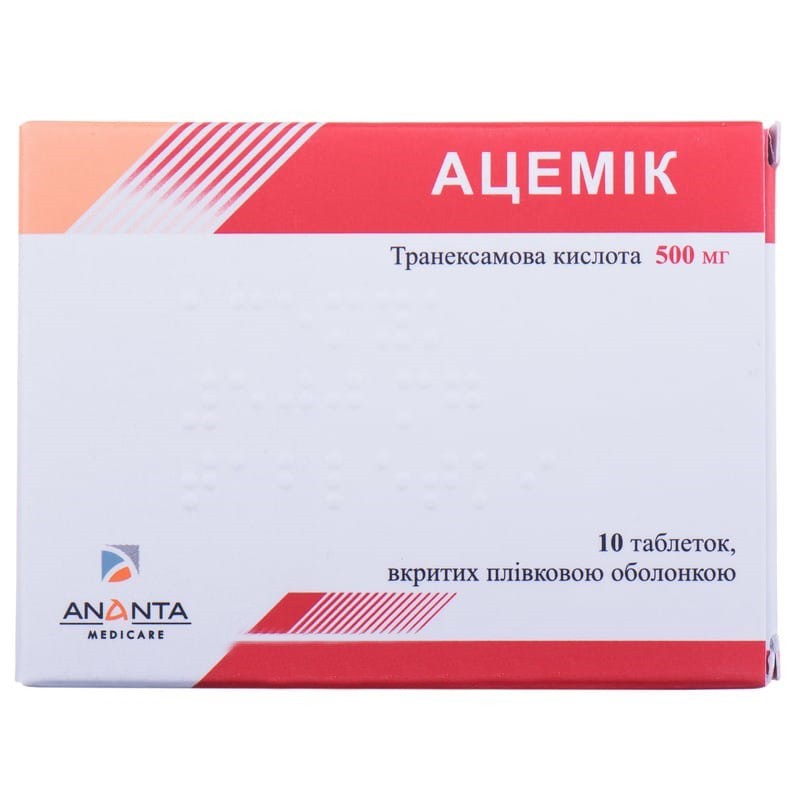



 Secure and encrypted payment processing
Secure and encrypted payment processing We ship to over 40 countries including the USA, UK, Europe, Australia and Japan
We ship to over 40 countries including the USA, UK, Europe, Australia and Japan Guaranteed refund or reship if you haven't received your order
Guaranteed refund or reship if you haven't received your orderAcemic film-coated tablets are indicated for bleeding or risk of bleeding with increased local fibrinolysis:
Active ingredient: tranexamic acid;
1 coated tablet contains tranexamic acid - 500 mg;
Excipients: microcrystalline cellulose, corn starch, croscarmellose sodium, stearic acid, colloidal silicon dioxide, magnesium stearate;
Tablet shell: Opadry White (hydroxypropyl methylcellulose, titanium dioxide (E 171), polyethylene glycol, polysorbate 80).
Hypersensitivity to tranexamic acid and to the components that make up the drug, severe renal failure, macroscopic hematuria, a high risk of thrombosis, thrombophlebitis, myocardial infarction, subarachnoid hemorrhage, active thromboembolic disease, venous or arterial thrombosis, or history of acute venous thrombosis fibrinolytic conditions after coagulopathy due to exhaustion, with the exception of excessive activation of the fibrinolytic system in acute severe bleeding, convulsions in the history of a violation of the perception of colors.
For adults, the drug is prescribed orally. Applied regardless of food intake. The tablets are swallowed whole, washed down with water. Tablets should not be chewed and crushed.
It is possible to prescribe the drug only when the expected benefit for the pregnant woman exceeds the potential risk to the fetus.
There is no clinical experience with tranexamic acid in children under 15 years of age with menorrhagia, therefore, this drug should not be used in this category of patients.
During the use of the drug should refrain from driving and working with mechanisms.
Symptoms: nausea, vomiting, abdominal pain, orthostatic hypotension, arterial hypotension, dizziness, headache, convulsions or increased manifestations of other adverse reactions, including the risk of thrombosis.
Treatment: induce vomiting, rinse the stomach, take activated charcoal. High fluid intake is required to promote renal excretion. Symptomatic treatment is used and, if necessary, anticoagulant therapy.
Tranexamic acid is incompatible with urokinase, norepinephrine bitartrate, deoxypinephrine hydrochloride, metarmine bitartrate, dipyridamole, diazepam.
Store in the original packaging at a temperature not exceeding 25 ° C.
Keep out of the reach of children.
Shelf life is 2 years.